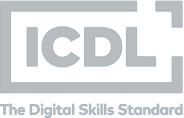Effective portfolios for creative careers
When applying for a creative career, employers will usually expect you to present a portfolio of work that showcases your talent and potential. In fact, a well-articulated and polished portfolio can be just as valuable as a well-written CV when applying for these roles because it gives potential employers a detailed look at your abilities. Remember, an out-of-date and irrelevant portfolio can lead to an interview disaster. So, here are our top five tips for creating an effective portfolio for those looking to pursue a creative career.
1. Be Thoughtful About What You Include
Think of your portfolio as your greatest hits – exclude anything you’re not proud of or don’t think is your best work. Even though online portfolios give you more opportunity to display your work and achievements than a traditional CV, you should be just as selective about what you choose to put on it. Bigger isn’t always better so share a variety of work to showcase your skills rather than boring the recruiter with 100 pages of similar examples.
Related: Top 10 CV Tips
2. Showcase Your Most Unique and Creative Work
We’d recommend identifying your top five examples of work that best demonstrate your talent and experience—and to showcase the type of work you want to be hired to do. These pieces should buck the latest trends – not follow a basic WordPress theme for website designers, for example – and differ from what everyone else is doing. Before adding a piece of work to your portfolio, consider if it’s something that will make someone stop and think, “Wow, this is great!”
3. Create a Physical Portfolio
Most people are using online portfolios these days. However, you should think about creating a smaller print portfolio or business card for in-person interviews, which you can leave behind with a link to your online portfolio. Why? Because the chances are you won’t be the only one applying for the role, so a physical portfolio is there for quick reference whenever a recruiter picks up a file for shortlisting.
Related: Find Out More About the Role of a Web Designer
4. Stay Current
Remember to continuously review, add and delete work in your portfolio to ensure that you stay current. Your portfolio should reflect who you are in the present day, so submitting one that doesn’t reflect the role you’re applying for, or hasn’t been updated in a long time, looks unprofessional. Remember, trends, techniques and technology change quickly. So, don’t include anything that’s more than three years old – you don’t want to look dated.
5. Get a Second Opinion
No matter how many times you check your work, there always seems to be one pesky grammatical error or spelling mistake that goes under the radar. And nothing kills your credibility faster than a portfolio with grammatical errors and misspellings. Once you’ve made your portfolio and finished proofreading your content, always get a second opinion. Whether it’s a friend or a family member, having someone else proofread your work will help identify any minor errors or inconsistencies that you may have missed.
By following these five top tips, you’re sure to land the creative career you’ve always dreamed of – good luck!


















